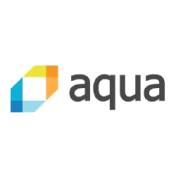Containers and Cloud Computing
Containers changed the adoption of public and private clouds. With a container image, a common package format can be run on premises as well as on every major cloud provider. This page gathers resources about how containers changed the world of cloud computing and how to run them in the cloud.
Below we have compiled publicly available sources from around the world that present views on Containers and Cloud Computing.
The Container Security book by Liz Rice
Fundamental Technology Concepts that Protect Containerized Applications
Perspectives on Containers and Cloud Computing
The Challenges of Bridging Containers and the Cloud
This post reviews the challenges to bridging containers and the cloud, and offers advice on how to address those challenges.
Knowing About Container In Cloud Computing
This informative blog will give you an insight into the concept of container in cloud computing, security concerns and its related topics.

Are Containers the Best Cloud Native Tool?
container-solutions.com

hasura.io

Enterprise Cloud Turns to Containers and Microservices
lightreading.com
How To

Getting Started with Tutum (Docker Cloud)
blog.codeship.com

Deploy Docker Containers on Amazon EC2 Container Service
aws.amazon.com

Getting Started with IBM Bluemix Container Service
console.bluemix.net

Getting Started with Docker Cloud
blog.couchbase.com

Deploying a Docker Container to the Cloud
packtpub.com
Specific Technologies

Why Docker Can’t Solve All Your Problems in the Cloud
threatstack.com

Multi-Cloud Kubernetes with Triton
joyent.com

9 Tips for Running Docker Containers in the Cloud
rightscale.com

How OpenStack is Valuable for Containerized Ecosystem
blog.calsoftinc.com

optimalbi.com
Specific Environments

Introduction to Azure Container Service for Kubernetes
docs.microsoft.com
Container Services

aws.amazon.com

azure.microsoft.com

console.bluemix.net
Further Reading
Container Architecture — Resources on building blocks of a container architecture, and architectural options organizations face when using containers for application development.
Advantages of Containers — Resources about the advantages of containers for developers and ops, including immutability, utilization, portability, performance and scalability.
Container Challenges — Containers are quickly becoming popular as a way to speed and simplify application deployment. However, while developers often find it fast and easy to deploy containerized applications, experts say that enterprises sometimes run into unexpected challenges when deploying containers in production. This page gathers resources about some of the major challenges in container adoption and how to overcome them.
Containers and IT Infrastructure — Information technology infrastructure is composed of physical and virtual resources that support the flow, storage, processing and analysis of data. This page gathers resources about the combination of containers and IT Infrastructure like hybrid clouds, private clouds, data center and more.
Enterprise DevOps —Large enterprises have bigger teams, more inherent operational complexity, and greater governance controls. Therefore, they need a different type of DevOps that caters to their sensibilities and not those of agile web startups. This page gathers resources about DevOps practices for large organizations.
eBPF — eBPF – extended Berkeley Packet Filter – is a Linux-native in-kernel virtual machine that enables secure, low-overhead tracing for application performance and event observability and analysis. eBPF delivers a lot more than network packet information, it can offer the deep visibility for cloud-native and container environments, from host and network data to container processes, resource utilization, and more.
eBPF Linux — eBPF (Extended Berkeley Packet Filter) is a Linux-native in-kernel virtual machine that enables secure, low-overhead tracing for application performance and event observability and analysis. eBPF enables programmers to write code which gets executed in kernel space in a more secure and restricted environment. This page gather resources about eBPF on Linux and tutorials.
















